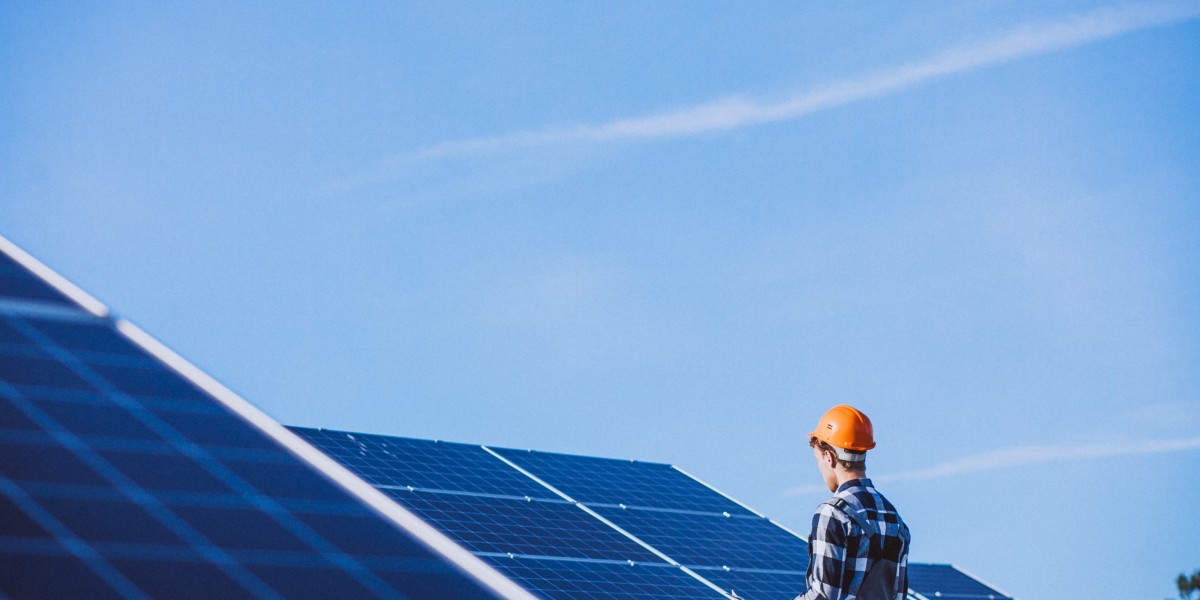Tubewell solar systems offer a revolutionary solution for irrigation and water pumping in Pakistan's agricultural and rural sectors. These systems harness solar energy to power pumps, providing a sustainable and cost-effective alternative to traditional diesel or electric-powered pumps. This guide explains the installation process, benefits, and maintenance of tubewell solar system in Pakistan .
1. Introduction to Tubewell Solar Systems in Pakistan
What is a Tubewell Solar System?
A tubewell solar system uses solar panels to power pumps that extract groundwater for irrigation, drinking, or industrial use. By replacing conventional diesel or electric pumps, these systems reduce energy costs and are environmentally friendly, offering reliable water solutions in remote or off-grid areas.
Benefits of Tubewell Solar Systems:
- Cost Savings : Solar systems lower operational costs by reducing reliance on diesel or electricity.
- Sustainability : Solar power is renewable and reduces carbon emissions, contributing to a greener environment.
- Reliability : Solar systems offer consistent water supply, especially in areas with unreliable electricity or fuel shortages.
2. Planning and Consultation
Site Assessment
The first step in installing a tubewell solar system is a site assessment by a solar installer. This involves evaluating:
- Sunlight Exposure: Ensuring the site gets adequate sunlight throughout the day to power the system effectively.
- Space Requirements: Determining the space needed for solar panel installation, considering roof or ground area.
- Water Needs: Estimating water demand and the depth of the tubewell to decide on the size and capacity of the solar system and pump.
Energy and Water Requirements
To design an efficient system, it is essential to analyze:
- Water Demand: Calculate the daily water requirement for irrigation, livestock, or household use.
- Pump Specifications: Identify the appropriate pump based on the depth of the well and desired water flow.
- Solar Panel Sizing: Estimate the number of panels needed to meet the pump's energy needs, factoring in sunlight availability.
3. System Design
Component Selection
A well-designed tubewell solar system includes several key components:
- Solar Panels: Monocrystalline panels are preferred due to their higher efficiency and durability.
- Pump: Choose between submersible or surface pumps, depending on the tubewell's depth and water requirements.
- Inverter: Converts the direct current (DC) from solar panels to alternating current (AC) for the pump.
- Controller: A solar pump controller regulates power flow to optimize performance and protect the system from overloads.
System Sizing
Sizing the system correctly is essential for efficient operation:
- Solar Panel Sizing: Calculate the number of panels required based on the pump's energy needs and average daily sunlight.
- Battery Storage (Optional): In areas with irregular sunlight, battery storage may be added to store excess power for use during the night or cloudy periods.
4. Securing Permits and Approvals
Regulatory Requirements
Installing a solar system for tubewells in Pakistan requires compliance with local regulations:
- Construction Permits: Obtain necessary permits for any structural installations, especially if the system is installed on agricultural land or public spaces.
- Electrical Approvals: Ensure that the system meets local electrical safety standards and obtain the necessary electrical permits.
Utility Interconnection (if applicable)
For hybrid systems that are connected to the grid:
- Technical Specifications: Submit the system's details to the utility provider to ensure it meets their interconnection requirements.
- Net Metering: In cases where the system generates excess energy, consider applying for net metering to sell the surplus back to the grid and reduce costs further.
5. Installation Process
Mounting System Installation
The first step in the installation is setting up the mounting system for the solar panels:
- Mounting Structure: Install a sturdy framework that can support the weight of the panels and withstand local weather conditions.
- Panel Placement: Position the panels at an optimal angle to capture the maximum sunlight and avoid shadows from nearby objects.
Pump Installation
Once the solar panels are set, the pump is installed:
- Pump Placement: Secure the pump in the tubewell at the appropriate depth based on the water table and flow requirements.
- Piping and Connections: Connect the pump to the water distribution system, ensuring proper piping and secure fittings.
Electrical Wiring and Connections
- Wiring: Connect the solar panels to the inverter and the pump using high-quality, weather-resistant wiring.
- Inverter Installation: Place the inverter in a well-ventilated area to ensure it operates efficiently without overheating.
6. Testing and Commissioning
System Testing
Before commissioning the system, it must be thoroughly tested:
- Electrical Checks: Verify all wiring and connections to ensure there are no faults.
- Pump Operation: Test the pump to ensure it delivers the expected water flow and operates smoothly.
- Solar Panel Output: Check the panels to confirm they generate the required amount of power to run the pump effectively.
Commissioning
Once the system passes testing:
- System Activation: Activate the system and verify that all components are functioning as designed.
- Training: Provide the system’s operators with training on how to use and maintain the solar system, ensuring it operates efficiently for the long term.
7. Maintenance and Monitoring
Regular Maintenance
To keep the tubewell solar system functioning at peak performance, regular maintenance is crucial:
- Cleaning Panels: Regularly clean the solar panels to remove dust and debris that can reduce their efficiency.
- Inspecting Components: Periodically check all components, such as wiring, inverters, and pumps, to detect wear or damage early.
Performance Monitoring
Use performance monitoring software to track system operation:
- Energy Monitoring: Track the system’s energy production and usage to ensure it is working efficiently.
- Performance Alerts: Set up alerts to notify operators of any issues, ensuring quick resolution and minimal downtime.
8. Financial Considerations
Initial Investment
The cost of a tubewell solar system includes purchasing the solar panels, pump, inverter, and installation services. While the upfront investment may be substantial, the long-term savings from reduced energy costs often offset this expense.
Return on Investment (ROI)
The ROI can be calculated by comparing the initial investment with the long-term savings in electricity or diesel fuel. Factors that affect ROI include:
- Energy Savings : The reduction in fuel or electricity costs over time.
- System Longevity : A well-maintained system can last over 25 years, providing long-term savings.
9. Challenges and Considerations
Weather Conditions
Pakistan's weather, including dust storms and high temperatures, can affect system performance:
- Choose High-Quality Panels : Use durable, weather-resistant panels to withstand environmental conditions.
- Regular Maintenance : Ensure regular maintenance to prevent dust buildup and overheating.
Regulatory Hurdles
Obtaining the necessary permits can be challenging. To overcome these obstacles:
- Work with Experts : Collaborate with solar installers who are familiar with local regulations.
- Stay Informed : Keep up to date with changing regulations that may impact solar installations.
Technological Advances
Stay informed about the latest advancements in solar technology:
- Monitor Industry Trends : New technologies can improve system efficiency and lower costs, so consider upgrades when appropriate.
10. Conclusion
A tubewell solar system in Pakistan is a sustainable, cost-effective solution for irrigation and water pumping, especially in agricultural and rural areas. The installation process—from planning and consultation to system commissioning and maintenance—ensures efficient and reliable performance.
By adopting solar technology, farmers and businesses can significantly reduce operational costs, improve water management, and contribute to environmental sustainability. With proper installation and maintenance, a tubewell solar system offers long-term reliability, lower energy costs, and increased energy independence, positioning it as a smart investment for the future of agriculture in Pakistan.








